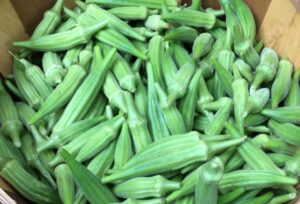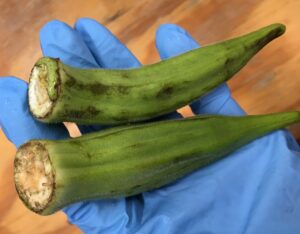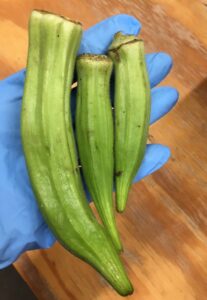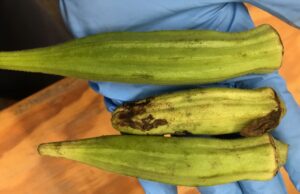Postharvest Produce Guide – Okra
go.ncsu.edu/readext?919124
en Español / em Português
El inglés es el idioma de control de esta página. En la medida en que haya algún conflicto entre la traducción al inglés y la traducción, el inglés prevalece.
Al hacer clic en el enlace de traducción se activa un servicio de traducción gratuito para convertir la página al español. Al igual que con cualquier traducción por Internet, la conversión no es sensible al contexto y puede que no traduzca el texto en su significado original. NC State Extension no garantiza la exactitud del texto traducido. Por favor, tenga en cuenta que algunas aplicaciones y/o servicios pueden no funcionar como se espera cuando se traducen.
Português
Inglês é o idioma de controle desta página. Na medida que haja algum conflito entre o texto original em Inglês e a tradução, o Inglês prevalece.
Ao clicar no link de tradução, um serviço gratuito de tradução será ativado para converter a página para o Português. Como em qualquer tradução pela internet, a conversão não é sensivel ao contexto e pode não ocorrer a tradução para o significado orginal. O serviço de Extensão da Carolina do Norte (NC State Extension) não garante a exatidão do texto traduzido. Por favor, observe que algumas funções ou serviços podem não funcionar como esperado após a tradução.
English
English is the controlling language of this page. To the extent there is any conflict between the English text and the translation, English controls.
Clicking on the translation link activates a free translation service to convert the page to Spanish. As with any Internet translation, the conversion is not context-sensitive and may not translate the text to its original meaning. NC State Extension does not guarantee the accuracy of the translated text. Please note that some applications and/or services may not function as expected when translated.
Collapse ▲Okra is harvested at an immature size, 3-7 days after flowering. Skin is tender, bruising will result in black marks on the pods. Field heat should be removed before storing at 45-50°F. Will hold for 7-10 days at 95-100% RH; do not expose to ethylene-producing vegetables, which will cause pods to yellow. Vulnerable to chilling injury below target temperature.
Quality Specifications
Harvest when fruit is bright green, pod fleshy, seeds small. Pods should be tender, not tough or fibrous; pods straight, well developed. Stem should be short, preferably cut rather than pulled, cap clean, without marks.
Common Quality Issues
Caps are torn, damaged. Rough handling causes bruising on green pods; Pods are large, fibrous.
Yellowing may result from too high storage temperature or over maturity, and is considered a defect.







